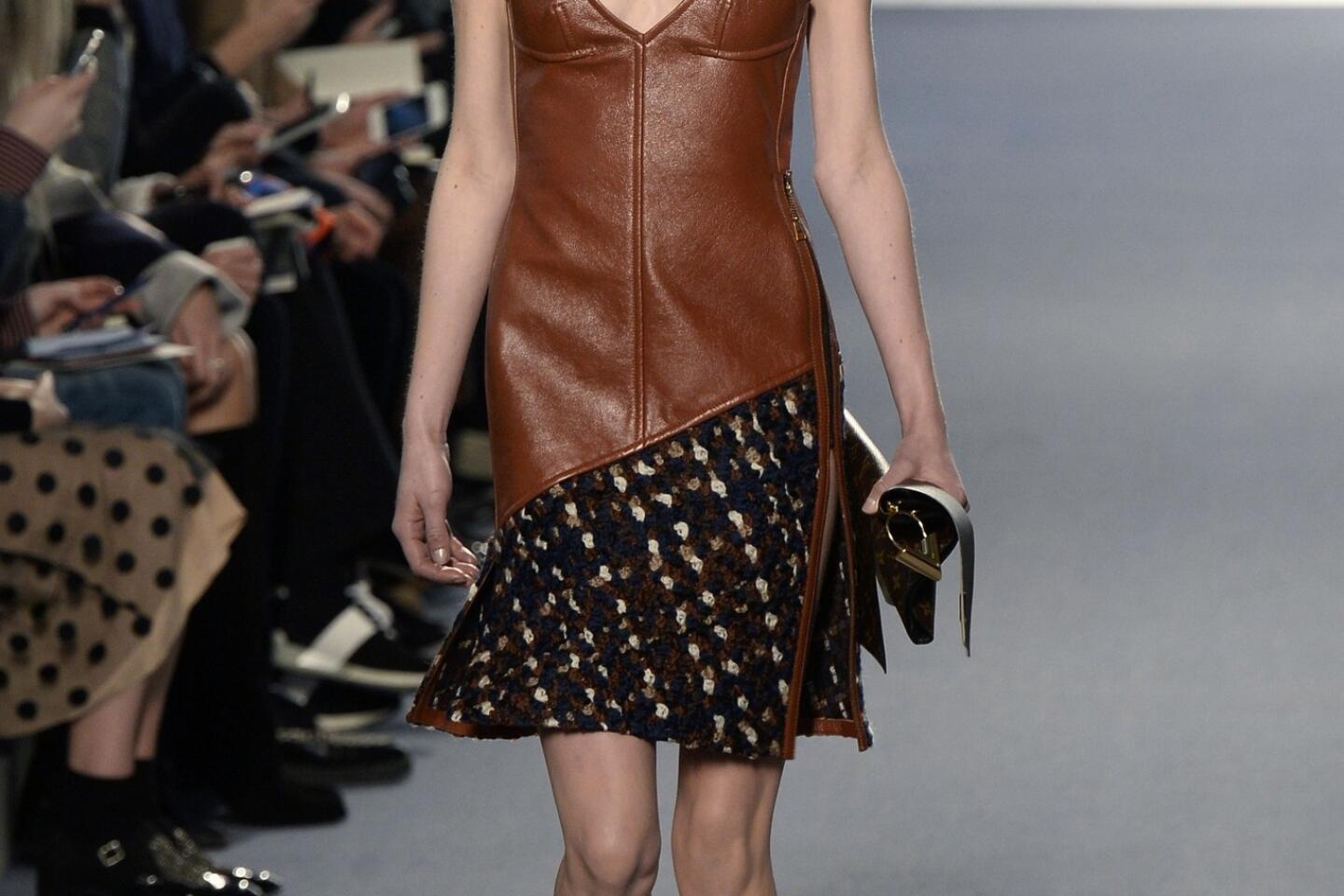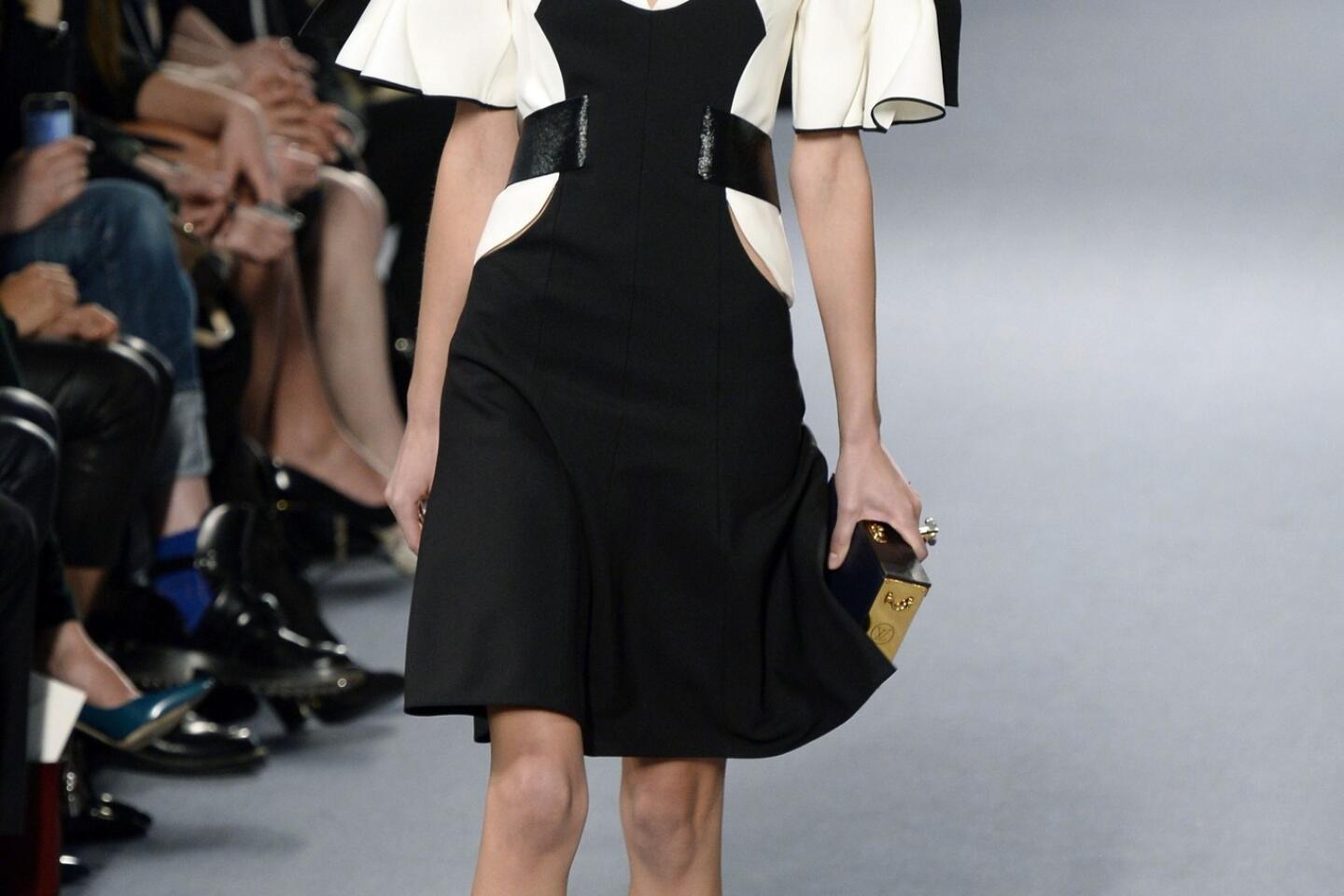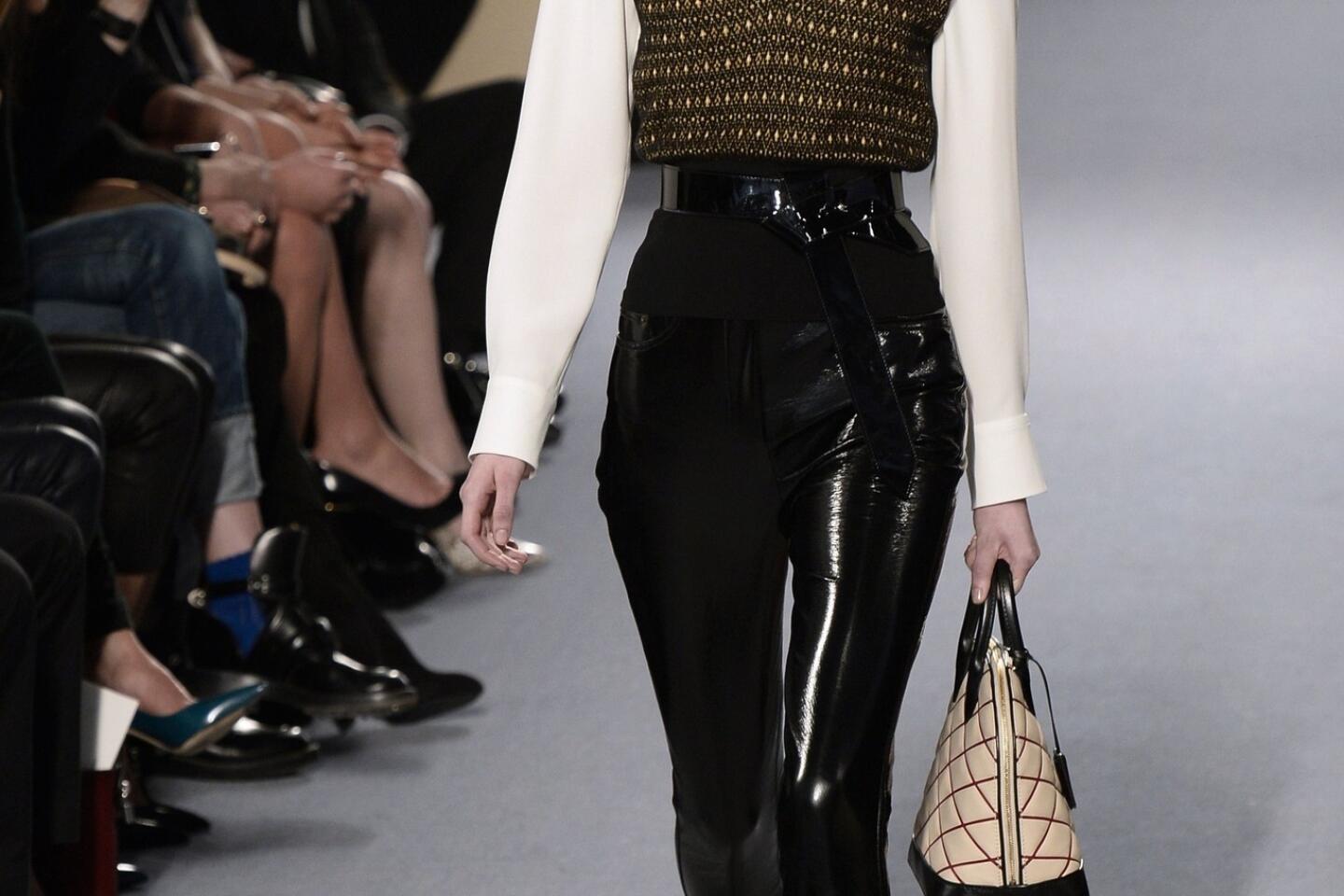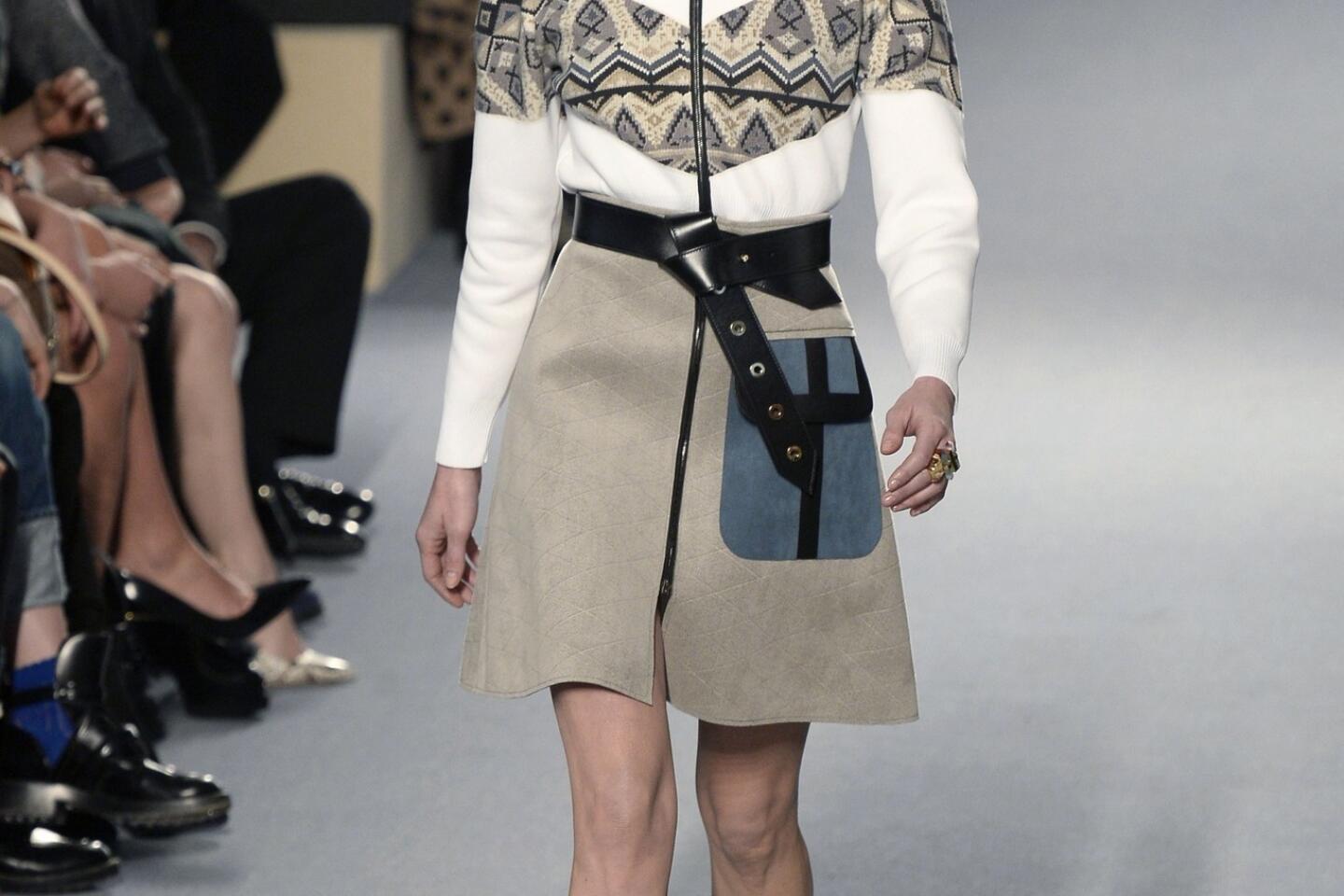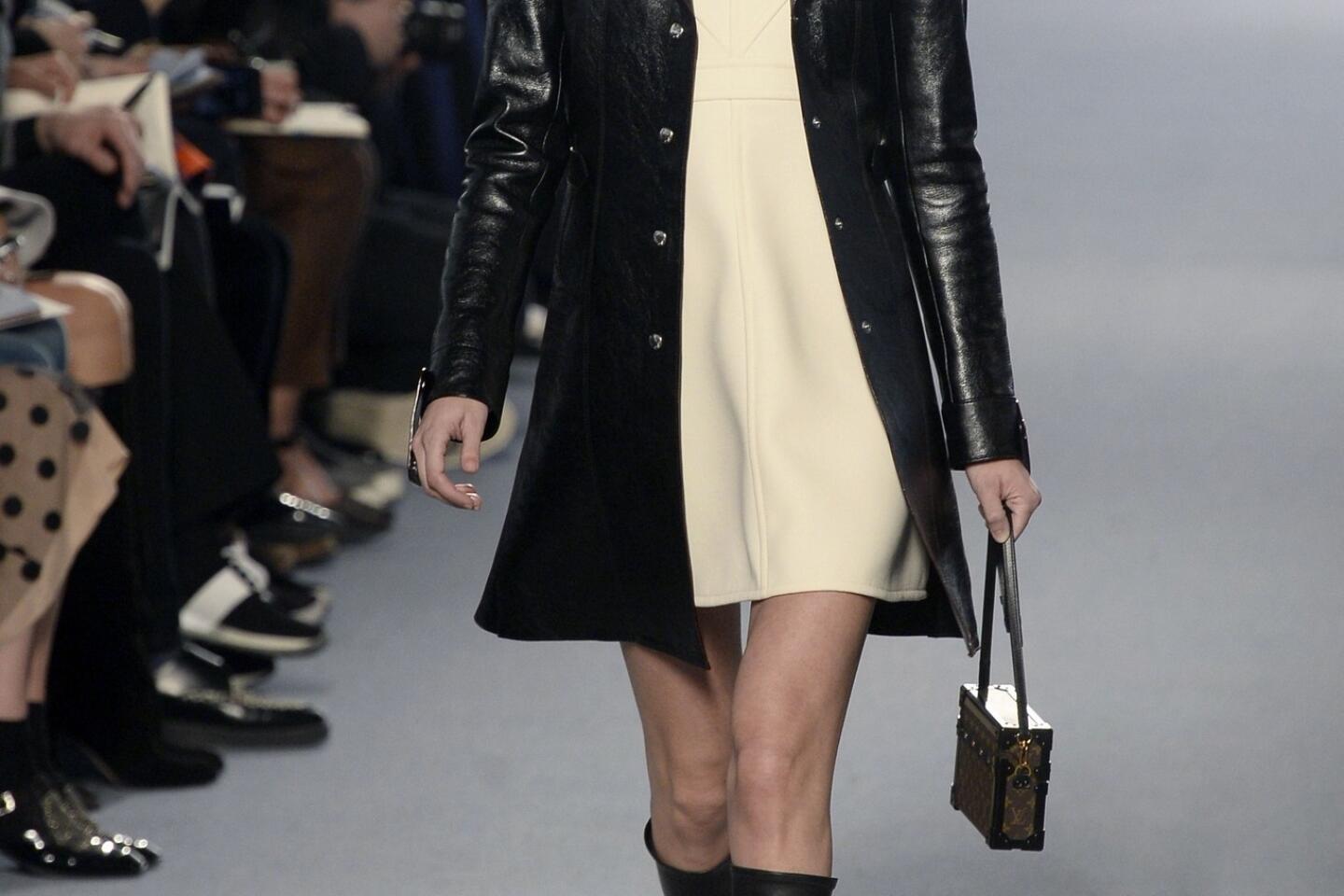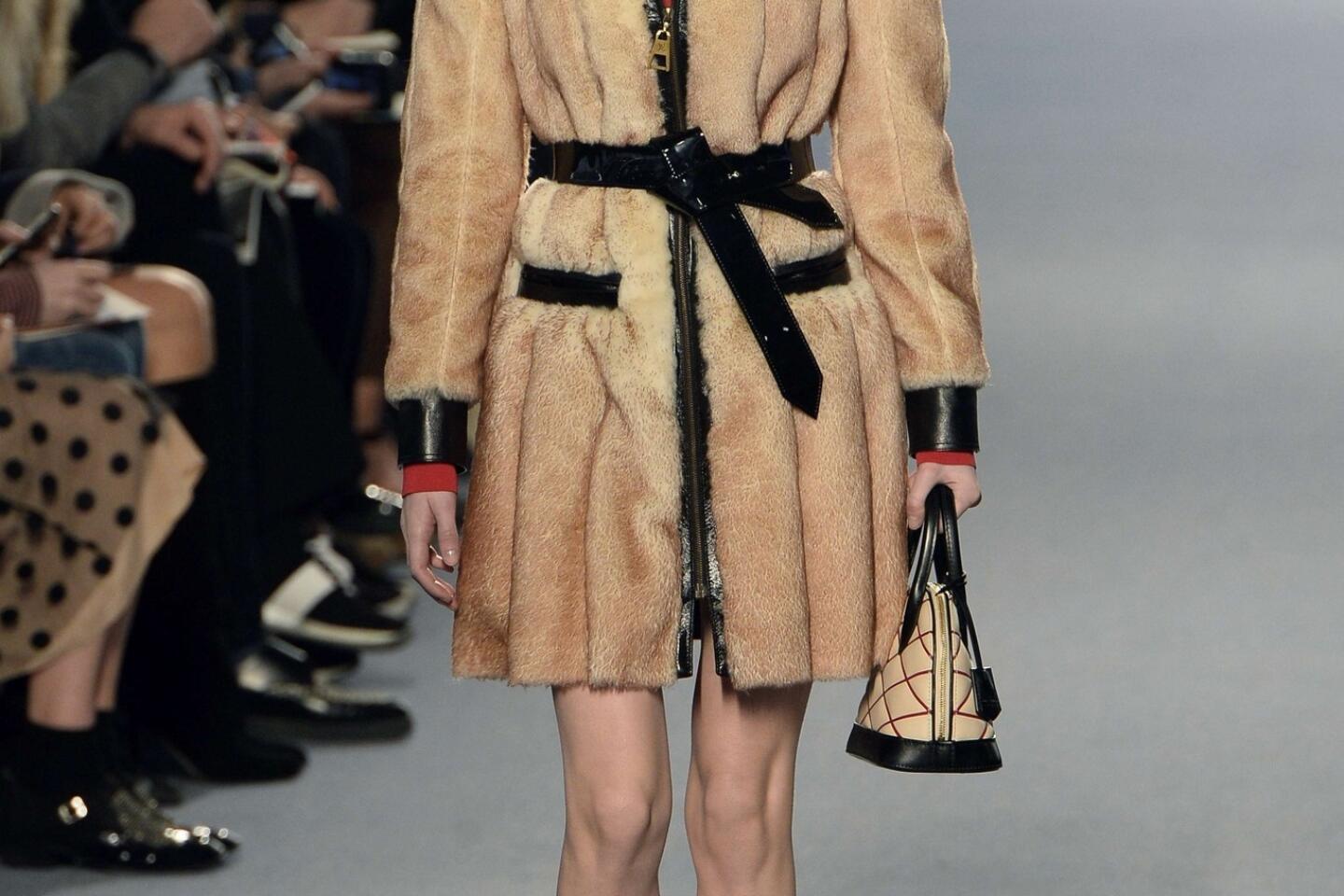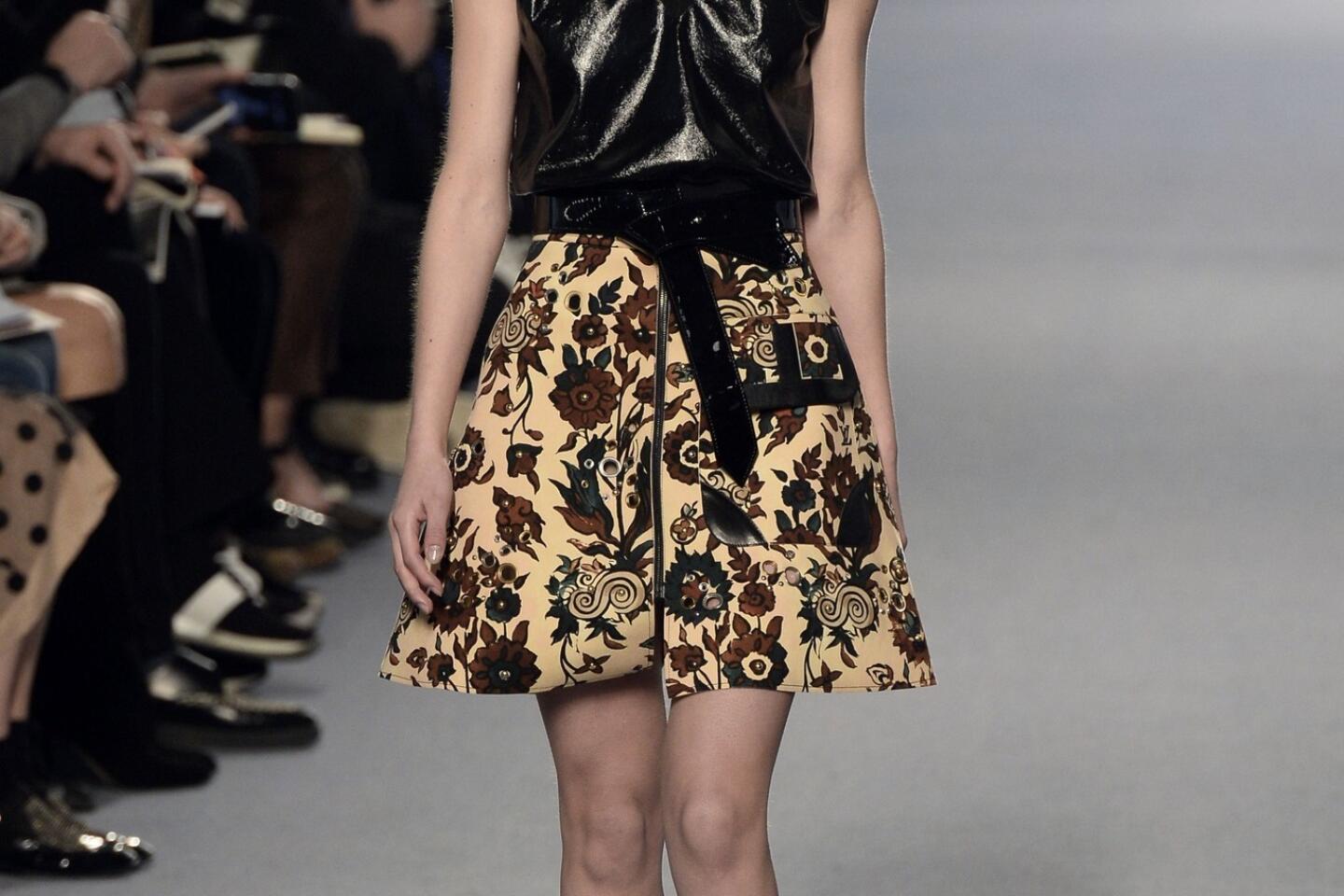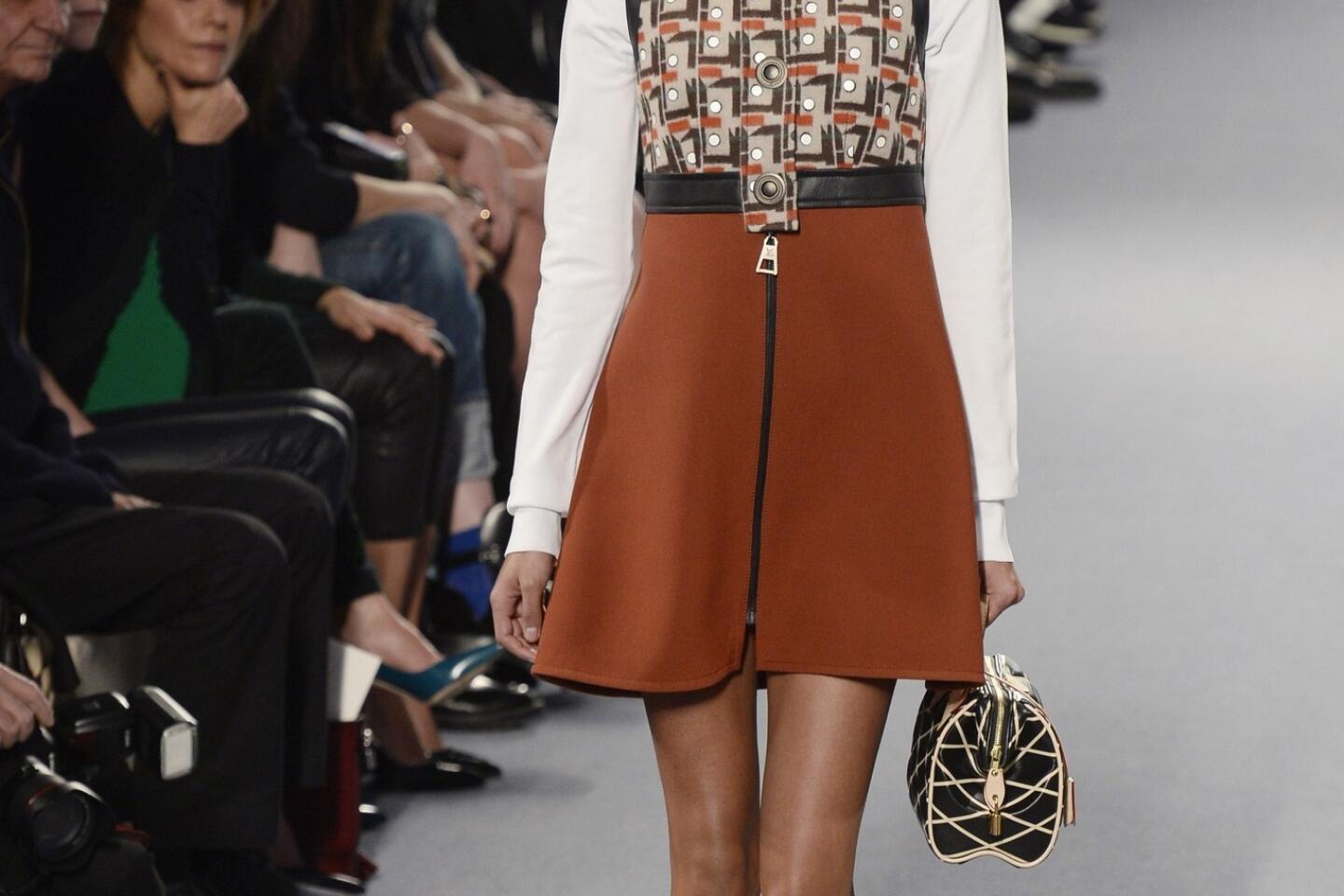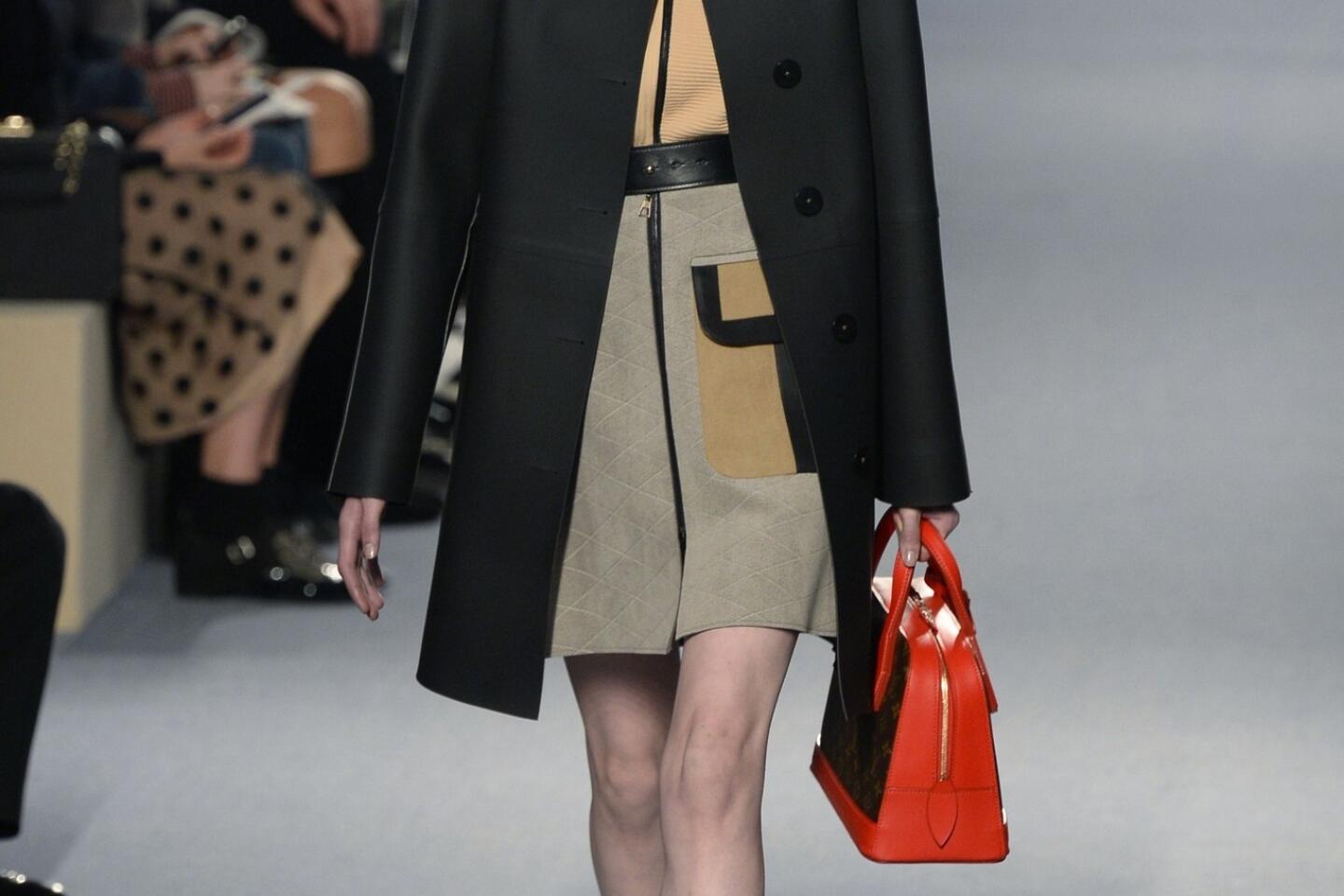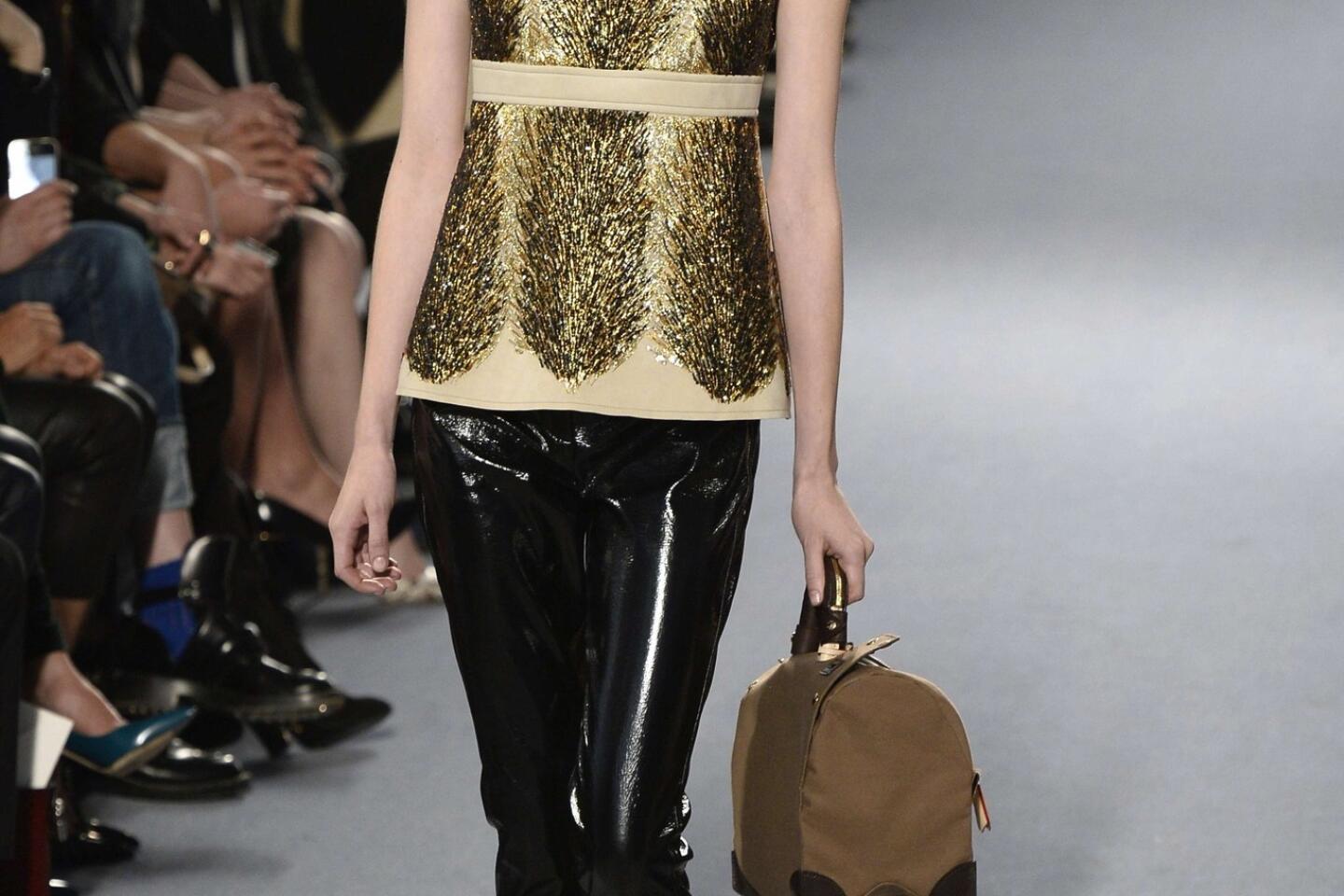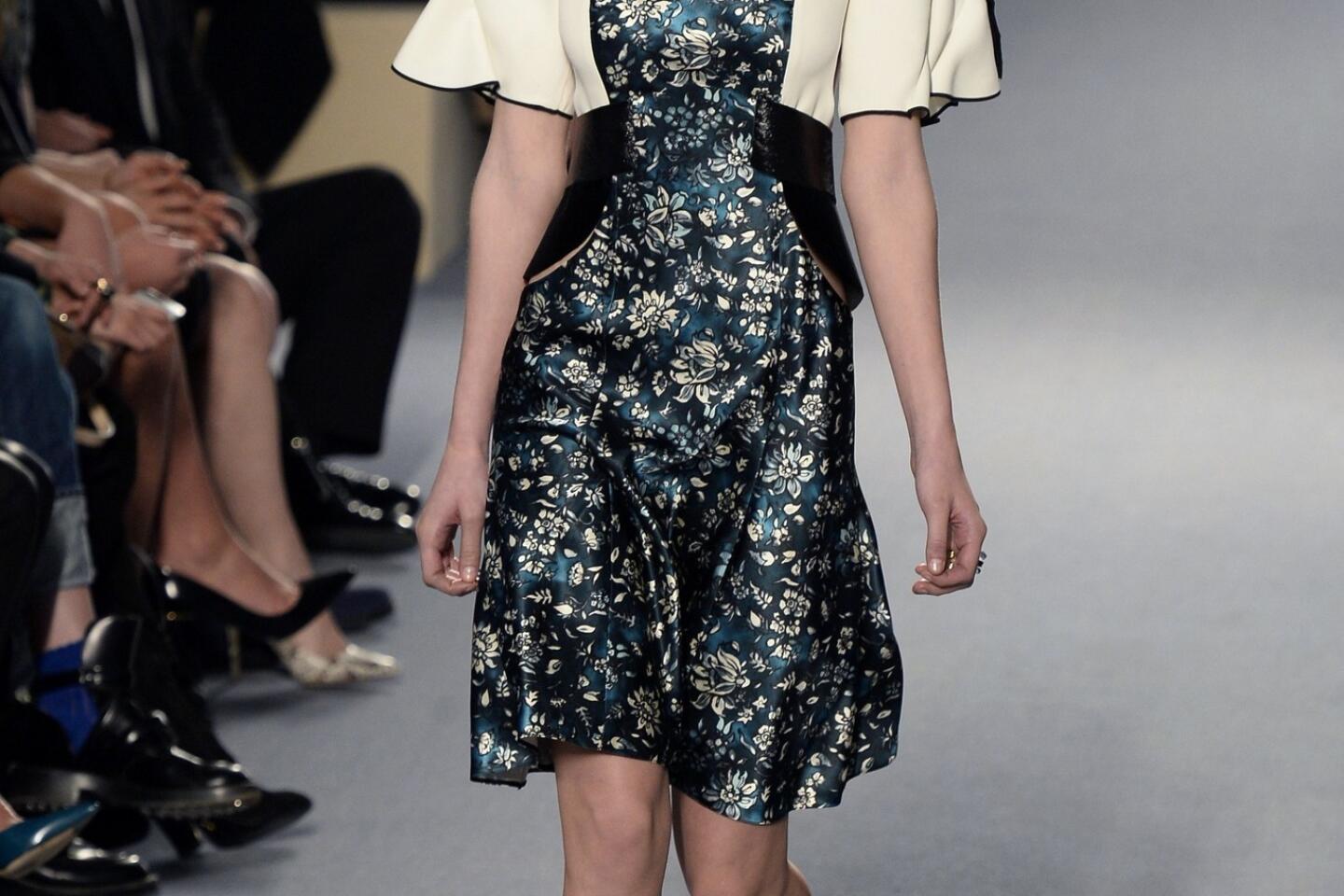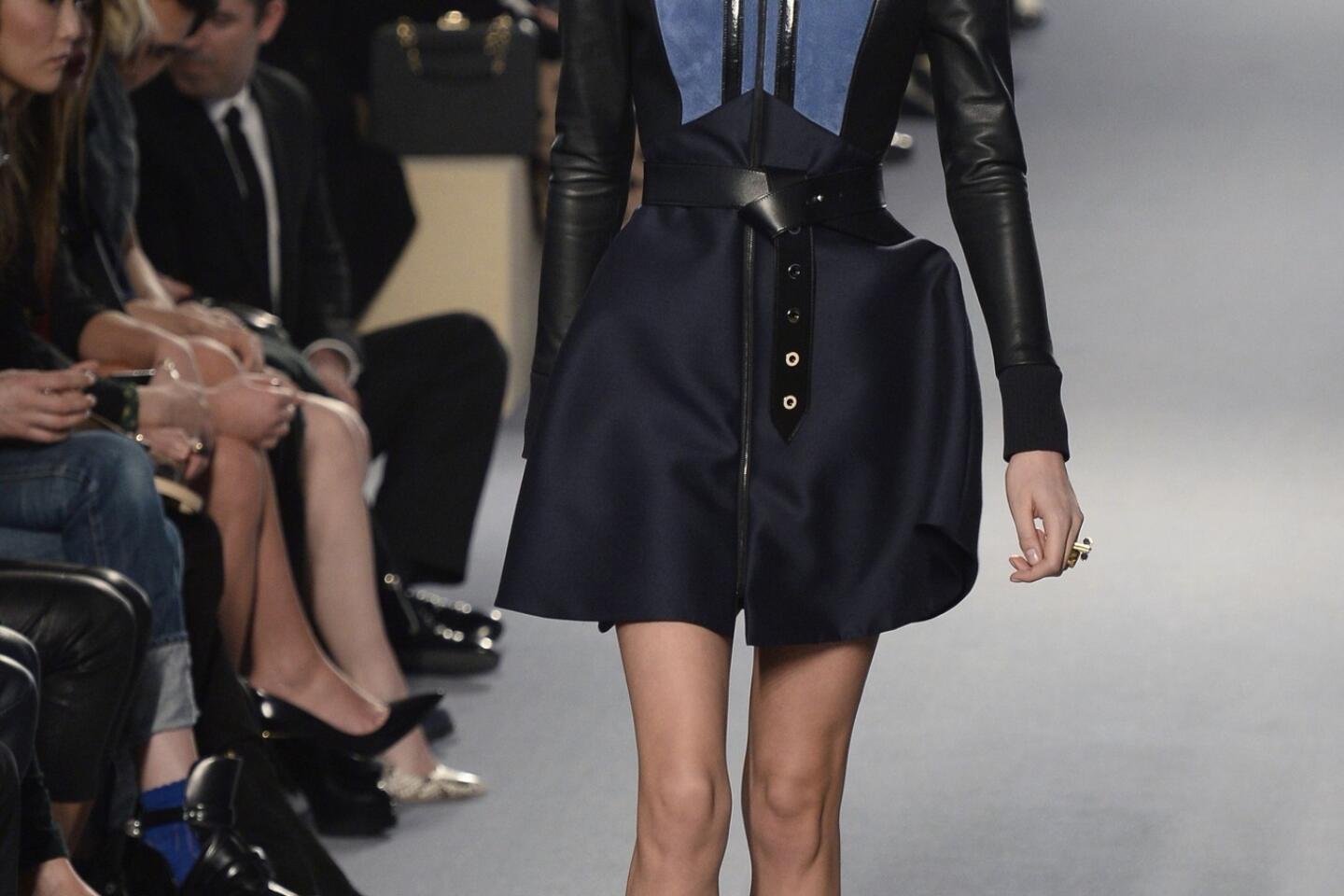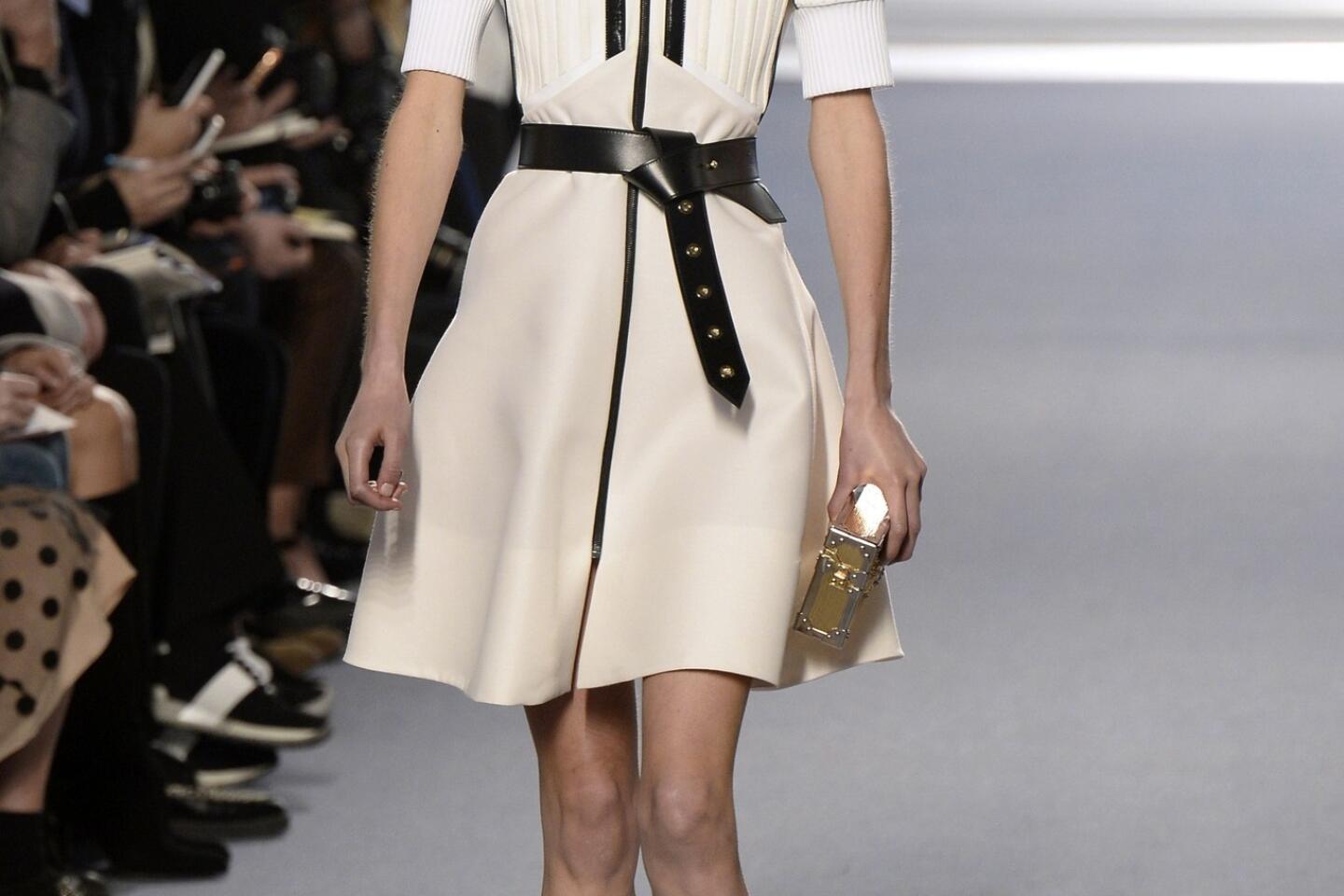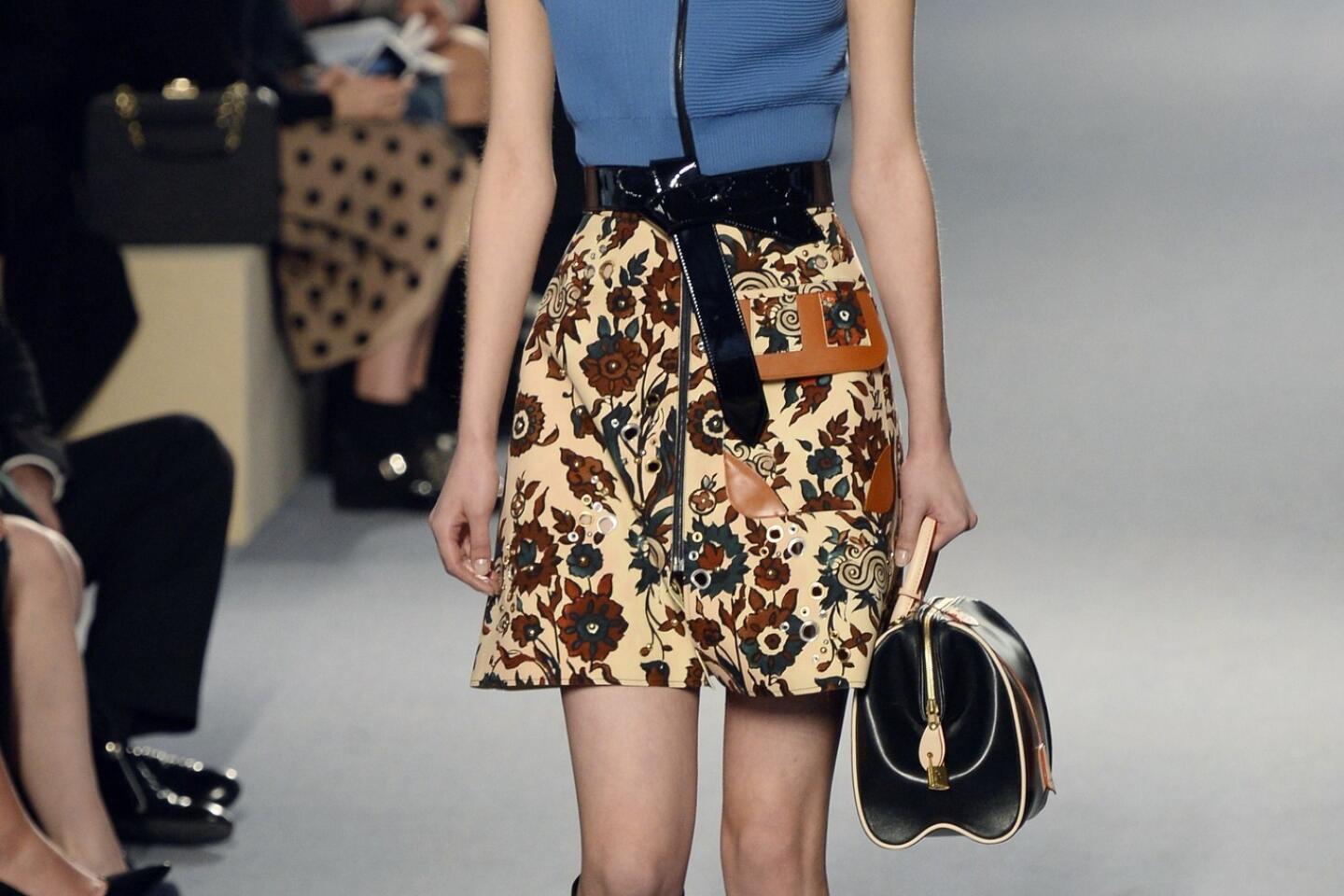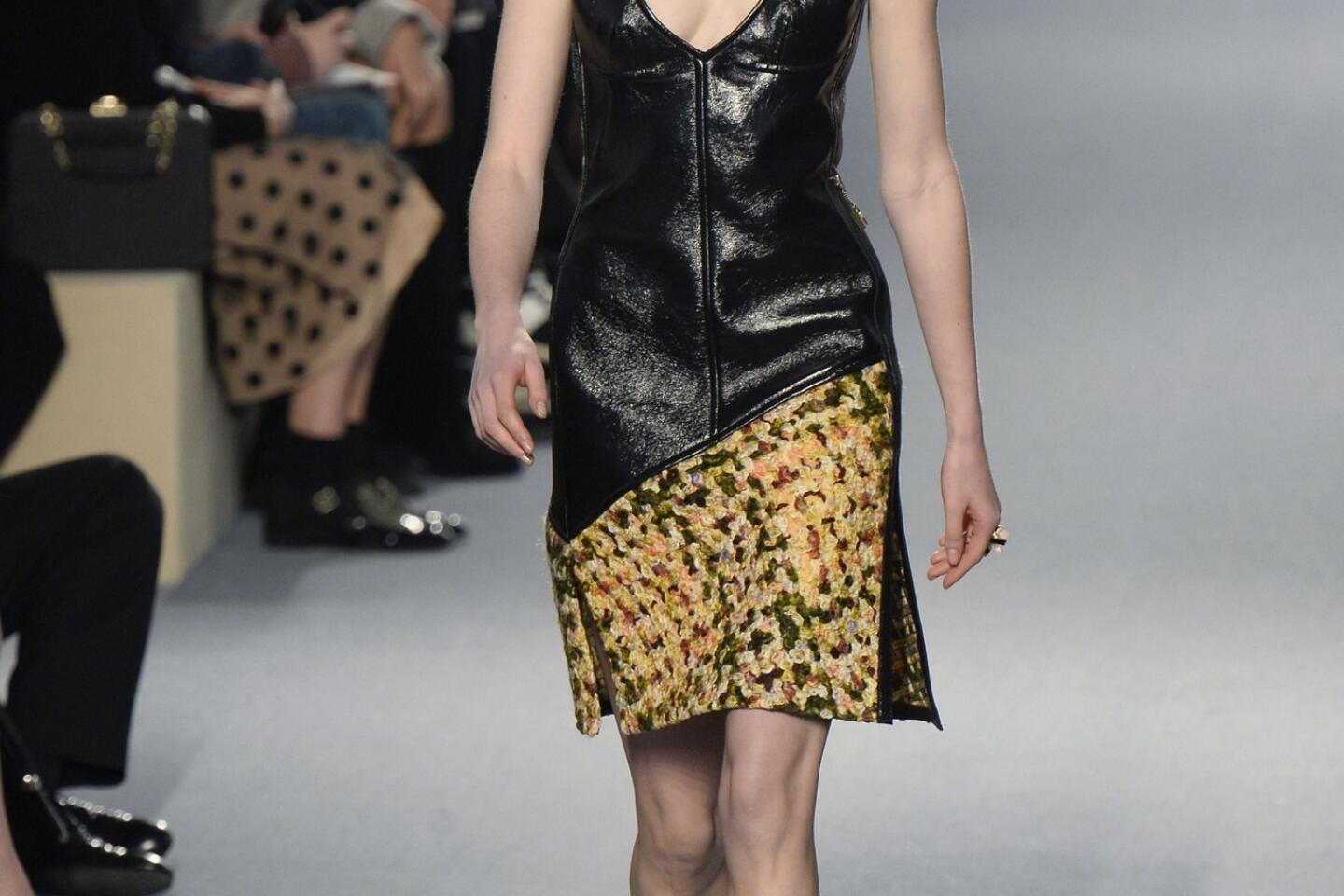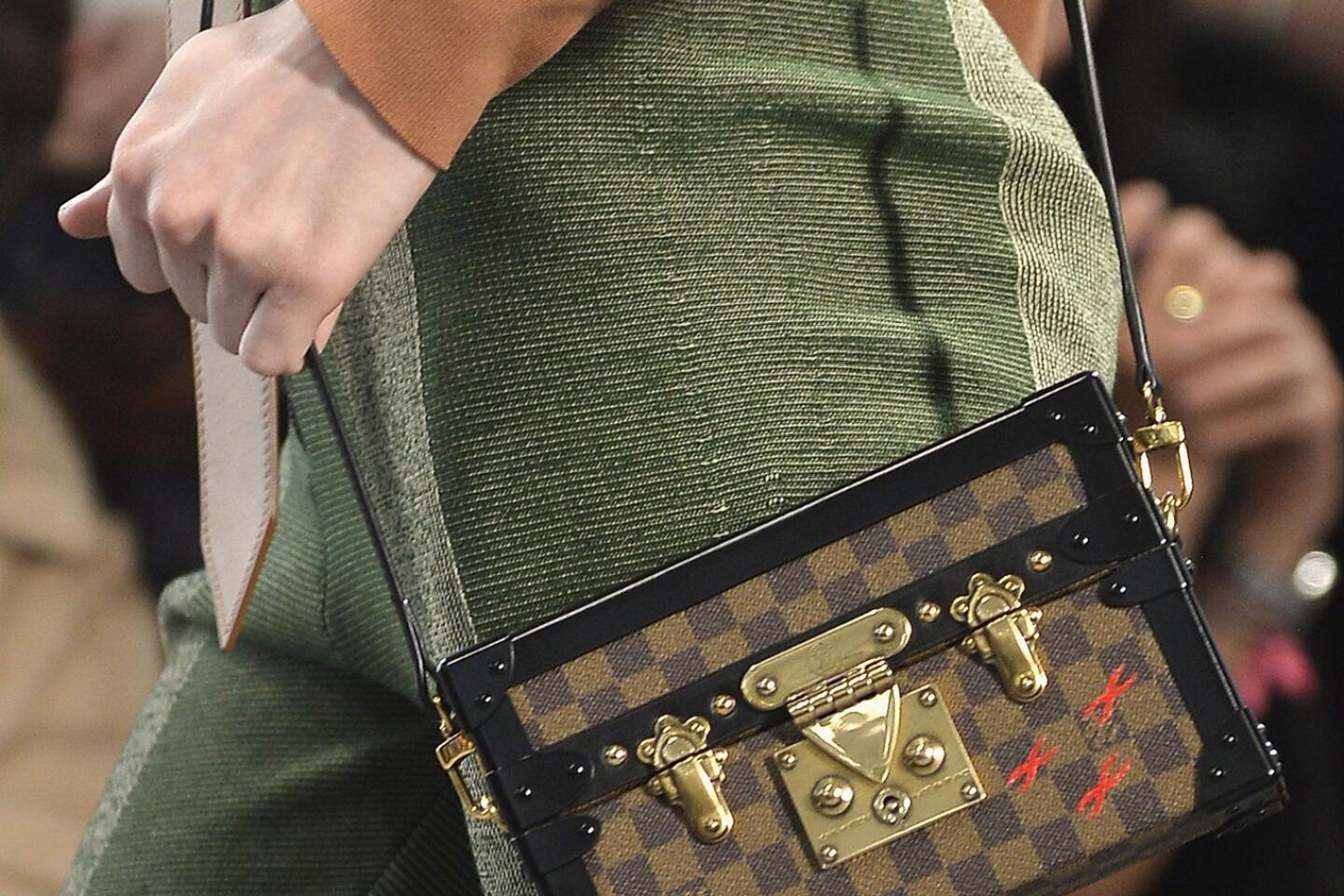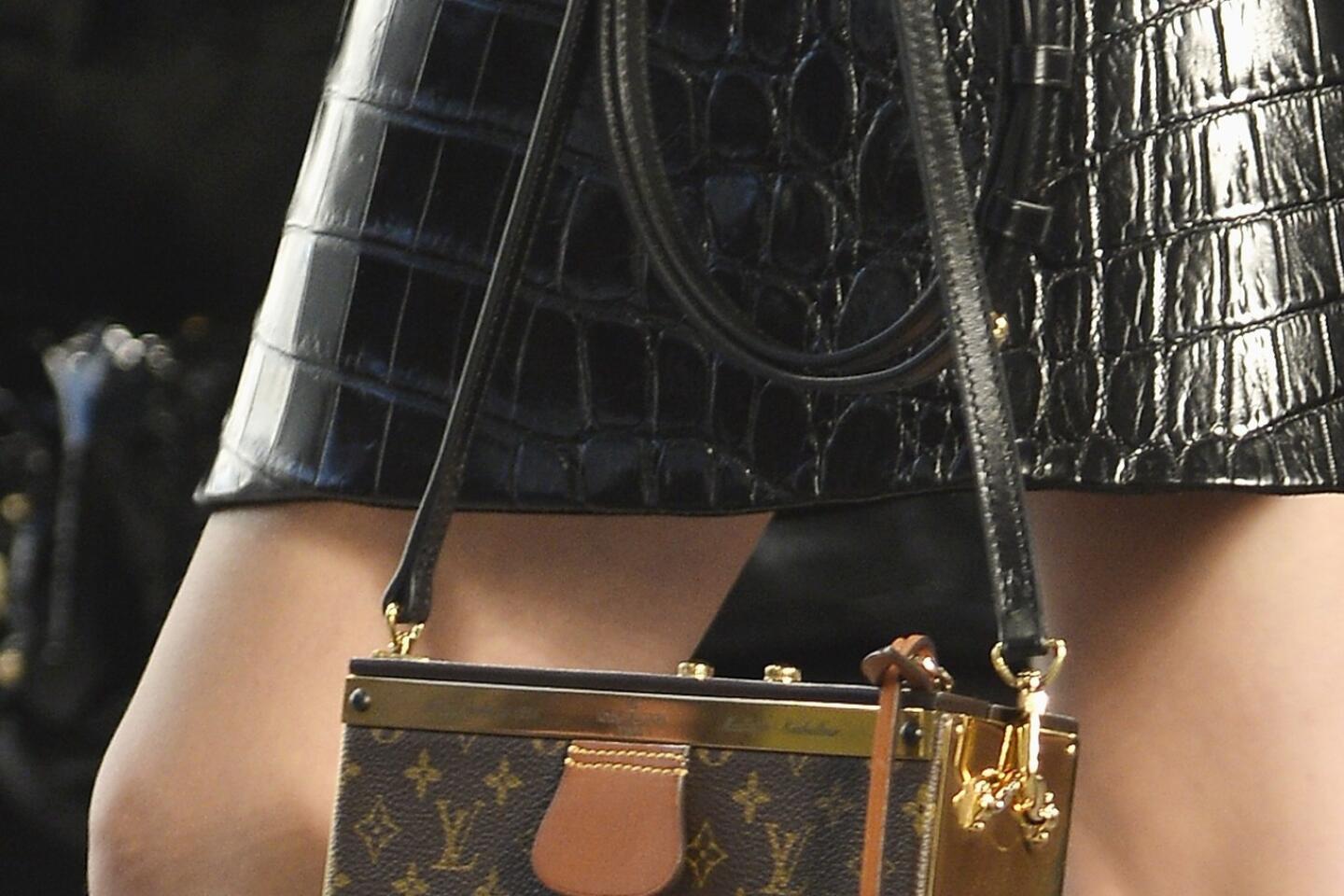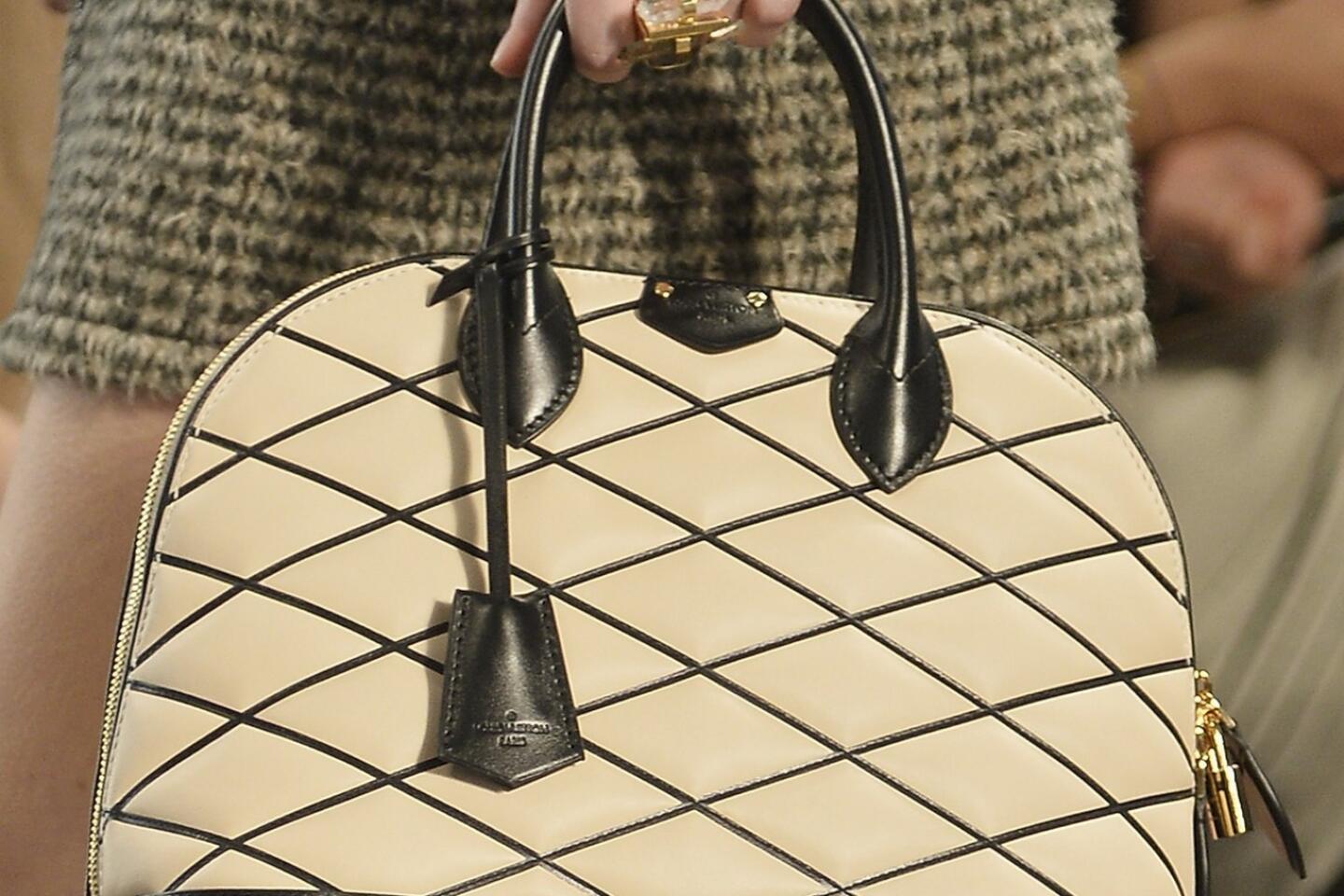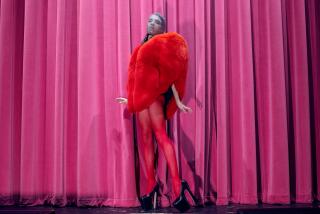Paris Fashion Week: At Louis Vuitton, a new era begins
PARIS -- A bright light of Paris fashion returned to the stage Wednesday when Nicolas Ghesquiere presented his debut collection for the luxury powerhouse Louis Vuitton.
The time slot on the calendar and the venue were the same, but the collection couldn’t have been more different in Ghesquiere’s hands than it was under the brand’s previous creative director, Marc Jacobs, who left his post in Paris to focus on his namesake brand in New York.
For Jacobs, Louis Vuitton was beauty for beauty’s sake. But for Ghesquiere, it is beauty for function’s sake, a direction that taps into the brand’s origins as a luxury luggage maker founded in 1854 and known for inventing innovative, stackable canvas trunks that made travel easy in the modern era of trains and steamships.
In the pavilion show space near the Louvre, when the music and lights came up, slatted blinds opened letting the sun shine in. “Today is a new day. A big day,” Ghesquiere wrote in a note that was placed on every seat. “The proud legacy. The inspiring history that looks to the future and to the world. The quest for authenticity and innovation. The desire for timelessness. Does not every designer ultimately seek to create something timeless?”
From the very first look -- a slim, beautifully seamed and fitted black leather coat with a luggage brown collar, over a cream mini dress -- it was clear that Ghesquiere intends for these clothes to be worn, not just admired from afar as an vision statement to support the bigger business of selling accessories.
The building block for the collection was leather, the dominant silhouette slim on top, short and A-line on the bottom, and the key piece a belted leather mini skirt with a cool, single front patch pocket.
“At Vuitton, the fashion could be quite timid compared with the leather goods,” Ghesquiere said backstage. “I wanted to integrate the idea of the bags and the clothing to make it an entire proposition. What was interesting was to use the craftsmen in the leather ateliers to develop some pieces of the clothes, which was new for them. Usually they do bags and the clothes are the clothes. I asked them to create this experiment between leather goods and ready-to-wear.”
Leather was a through line, worked with panels of nubby boucle on sleeveless dresses and sporty skirts with zipper details at the sides revealing a sexy bit of leg; molded into vests, jackets and pants that looked as soft as French butter; and used as a canvas for sparkling sequin embroidery on zip-front dresses, which were as close to eveningwear as Ghesquiere ventured.
There was also a handful of crepe dresses, masterfully constructed in a softly architectural manner. One particularly gorgeous design fused a belted black bodice with a white, cape-sleeve top.
“What I was trying to express was quite effortless to be honest, though it took a lot of work,” the designer said. “I have this vision of the Vuitton woman as someone who is talented at mixing clothes, rather than having a look. It’s this easiness of having comfortable, functional pieces -- a new casualness.”
When it came to the leather goods themselves, the star piece was an LV-logo box clutch modeled after Vuitton’s famous travel trunks, only shrunk to miniature proportions. Small, you say? Well, sure. But large enough to carry a cellphone. And the way the world moves now, that’s all you need.
It was a very smart collection. The modern, spare look of the clothes was its own kind of unburdened luxury in line with chic French brands Celine, Chloe and Hermes, but also inherently American in its casual utility.
So Ghesquiere, a native Frenchman, designed a more sporty, American-style collection than Jacobs, who while he was at Vuitton was an American in Paris, enamored of the ornamental showgirls, French maids and haute bourgeoisie. It’s a new era at Vuitton indeed.
ALSO:
Chained to our shopping carts at Chanel
At Alexander McQueen, a return to wild romance
At Stella McCartney, a luxe DIY spirit -- and stirrup pants
